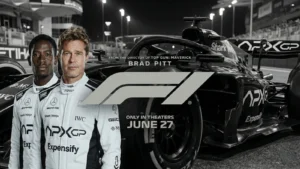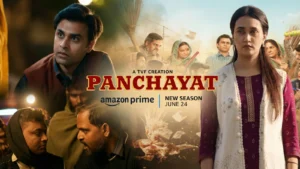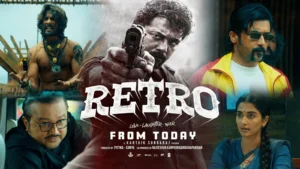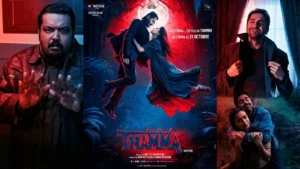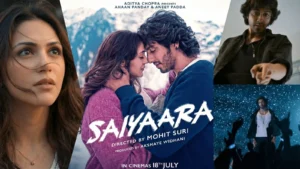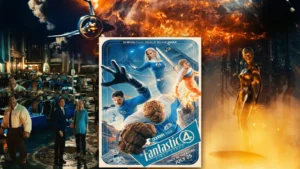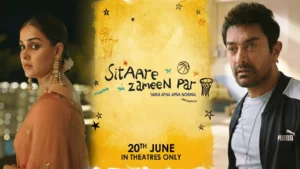After doing so much fuss, I finally managed to watch HIT: The Third Case. And honestly, going into the theatre, I didn’t know anything about it. I just had a vague idea that there exists a franchise named HIT, whose first part released in 2020. I also knew that its Hindi remake had been made, starring Rajkummar Rao. That was the extent of my knowledge. The movie I watched today, led by Nani, is the third part of that very franchise.
When I saw its trailer a while back, that’s when my curiosity properly kicked in. Especially because in the end, they show a wild shot – our hero, and a man behind him tearing someone into two pieces. That one moment had me reacting like, “Oh damn.” I knew I had to watch this film. But between me and HIT 3, destiny placed too many obstacles, as if the Universe wanted to create its own investigation track.

The Journey to the Theatre – A Case in Itself
The first and biggest problem was the release date. The makers dropped it on 1st May, the day when seemingly the entire world decided to release their films. Every movie was running in my city – Thunderbolts, Raid 2, Retro, even The Bhootnii. But one film was nowhere to be seen. Just one picture had no sign at all – HIT: The Third Case. It felt like a missing person’s report.
So naturally the question arose – what will I do?
A hundred kilometers away, in another city, the movie was playing. I began calculating. Three hours of travel to reach there. Three hours of movie. Three hours to return. An entire day gone. I was ready to accept this fate and travel, but right when I was making that final plan, the news I had been waiting for appeared. Apparently, HIT 3 was available in my own city. Not in a multiplex, but in a single screen theatre – the kind of old-school cinema hall where I had watched only one movie till date, and that too Bajrangi Bhaijaan, purely because I had no money back then.
I thought to myself, “F it. Time to go the old ways.”
Single-screen theatres have their charm, but infrastructure is… let’s just say, vintage. Wooden seats. Huge fans hanging overhead, rotating round and round in the burning heat. But I went in anyway. The surprise came later.
- The Journey to the Theatre – A Case in Itself
- A Rough Theatre Experience that Became Its Own Plot Twist
- A Solid Investigation Core – Where HIT Feels at Home
- A Brief Detour into Romance – Uneven but Not Disruptive
- Does the Mystery Work? Yes, Surprisingly Well
- The 65% Mark – Where the Film Completely Changes Shape
- The Final 20–25 Minutes – Action That Completely Blows the Roof Off
- The HIT Universe Question – Do You Need to Watch Previous Parts?
- Strong Value, Strong Performances – But a Prolonged Ending
- Final Verdict
- Related Movie Reviews
- Rate this movie
A Rough Theatre Experience that Became Its Own Plot Twist

The actual problem began while watching the film. The theatre’s sound system simply wasn’t capable of handling its audio files. The background music blasted at maximum volume, drowning out dialogues. Characters were speaking, but I could barely hear their words. So let me confess honestly: nearly 20–25% of the dialogues, I simply did not understand. Using my brain and pure guessing skills, I filled the gaps. “Okay, maybe this is happening… that is going on…” And that’s how I made my way through the experience.
But still, after all this fuss – after the travel plans, confusion, single-screen struggle, and sound system torture – the big question remained: Was it worth it? Did the film give me value? Big yes.
A Solid Investigation Core – Where HIT Feels at Home
As I already mentioned, I haven’t watched even one film from this franchise. I didn’t know anything about its storytelling grammar. I only assumed that murders happen, mysteries unfold, and the police chase the truth. And that’s exactly what HIT: The Third Case delivers for 60–65% of its runtime.
Arjun Sarkar, the central character played by Nani, is a police officer working in the Homicide Intervention Team – HIT. His job is to investigate brutal crimes and serial murders. But this time Sarkar faces a bigger hurdle: the system puts him in jail. Why?
Because serial murders are taking place where humans are hung upside down. A deep cut is made on their necks. Two or three organs of their bodies are found missing. And unlike usual cases where these crimes remain in one area, here the same pattern appears in three different states – Jammu & Kashmir, Bihar, and Rajasthan. The question becomes: how is the same style repeating in such distant locations? Who is orchestrating it? And what does Arjun Sarkar have to do with all of this?
These questions are the backbone of the narrative, and the film slowly unravels answers.
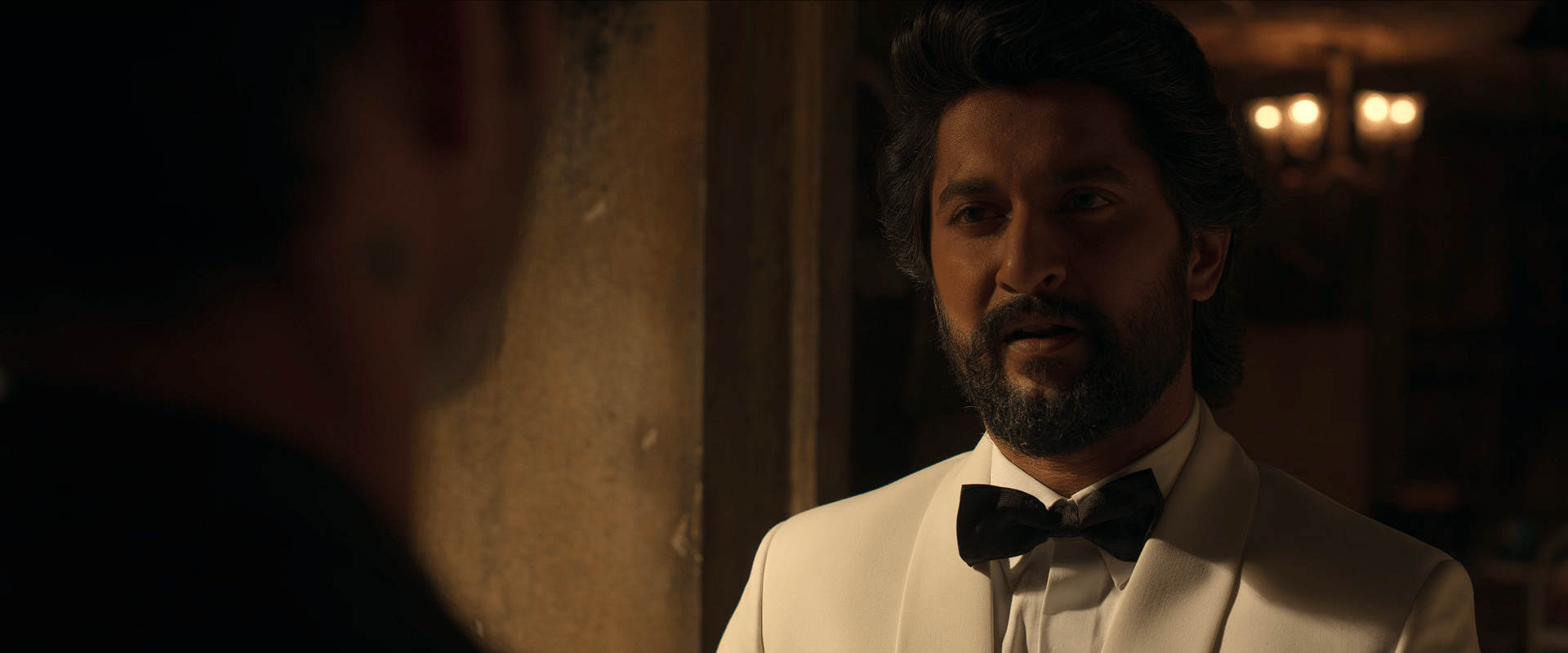
A Brief Detour into Romance – Uneven but Not Disruptive
In the middle of this heavy investigation track, the film briefly pauses to show a love story. It’s okay. They didn’t do the typical song-and-done routine; they actually showed some romantic scenes with a natural flow. But the pacing dips a bit. It feels like someone pressed pause on the main story. Later, the movie attempts to merge this love angle into the central plot. It tries sincerely, but I wouldn’t call it seamless. It doesn’t ruin anything, but you notice the shift.
However, what I genuinely enjoyed was Nani’s attitude and style during these portions. You know how movies try to make the hero “cool” by giving him some personality quirks? Especially in South films, they emphasize these traits so that the audience remembers. But here Nani’s choices felt subtle and organic. It wasn’t screaming for attention. It felt natural. Natural Star Nani – yes, see how I joined that?
Does the Mystery Work? Yes, Surprisingly Well
In any investigation or mystery film, the main question is simple – does the mystery work? In HIT: The Third Case, the answer is a confident yes. The first half, despite feeling a bit long, remains thoroughly engaging. Small details impressed me.
For instance, Arjun’s personality is short-tempered. If he dislikes something, he shouts. They used different vehicles to reflect the scale of the case – because murders were scattered across the country. So in Jammu-Kashmir he drives a Toyota Hilux, in Rajasthan an Force Gurkha, and in his hometown, a Jeep Wrangler. The way he catches suspects, interrogates them, extracts information, and even tortures them – everything fits the tone of a grounded, gritty investigation.
And since the film is rated 18+, there is bloodshed as well. Not excessive, but present.
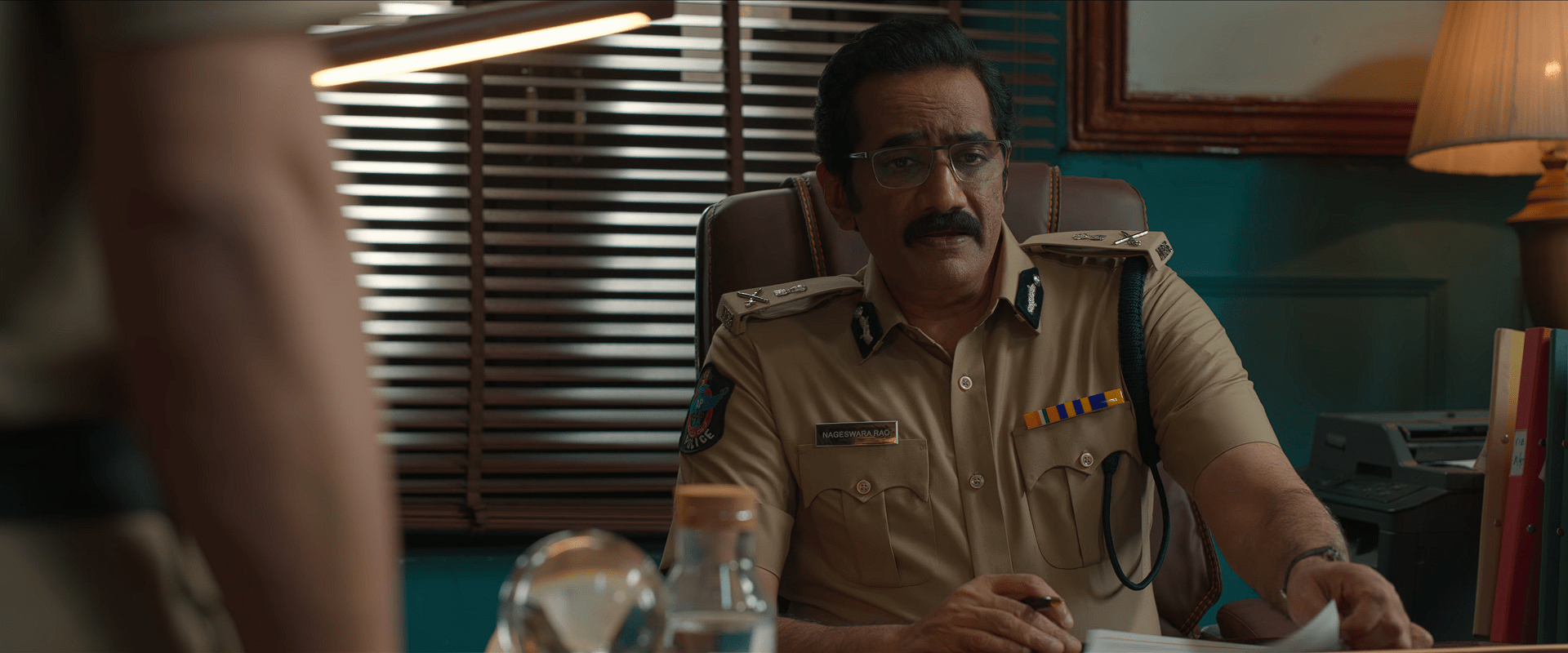
The 65% Mark – Where the Film Completely Changes Shape
Now here comes the twist. As I said, the movie is 60–65% investigation-focused. But in the second half, it suddenly dives deeper and takes a massive turn. A story that started like a grounded, realistic crime case suddenly expands into something on the scale of Avengers: Endgame.
No, superheroes don’t appear. But I’m talking about the relative scale. From point A to point Z, the jump is enormous. And to execute that jump, the film takes a bold step right at that 65% mark. Watching it, I genuinely wondered whether I was watching the same film I started two hours ago.
In the first half, they try to keep things realistic – explaining how stabbing works, how survival depends on whether the knife stays inside or is pulled out. They even design an entire action sequence around whether the villain can pull the knife out or not. Very grounded and logical.
But in the second half? Suddenly Nani’s character is smashing through glass repeatedly. He’s getting beaten, cut, thrown – but he simply continues. He struggles a bit, but he’s largely unaffected. This shift makes it feel like two different films stitched together.
And this is my biggest complaint.
Not a deal-breaker, but important to highlight. The jump in realism creates tonal inconsistency. Maybe the first two parts also did this – let me know in the comment section of the article. But regardless, it’s noticeable here.
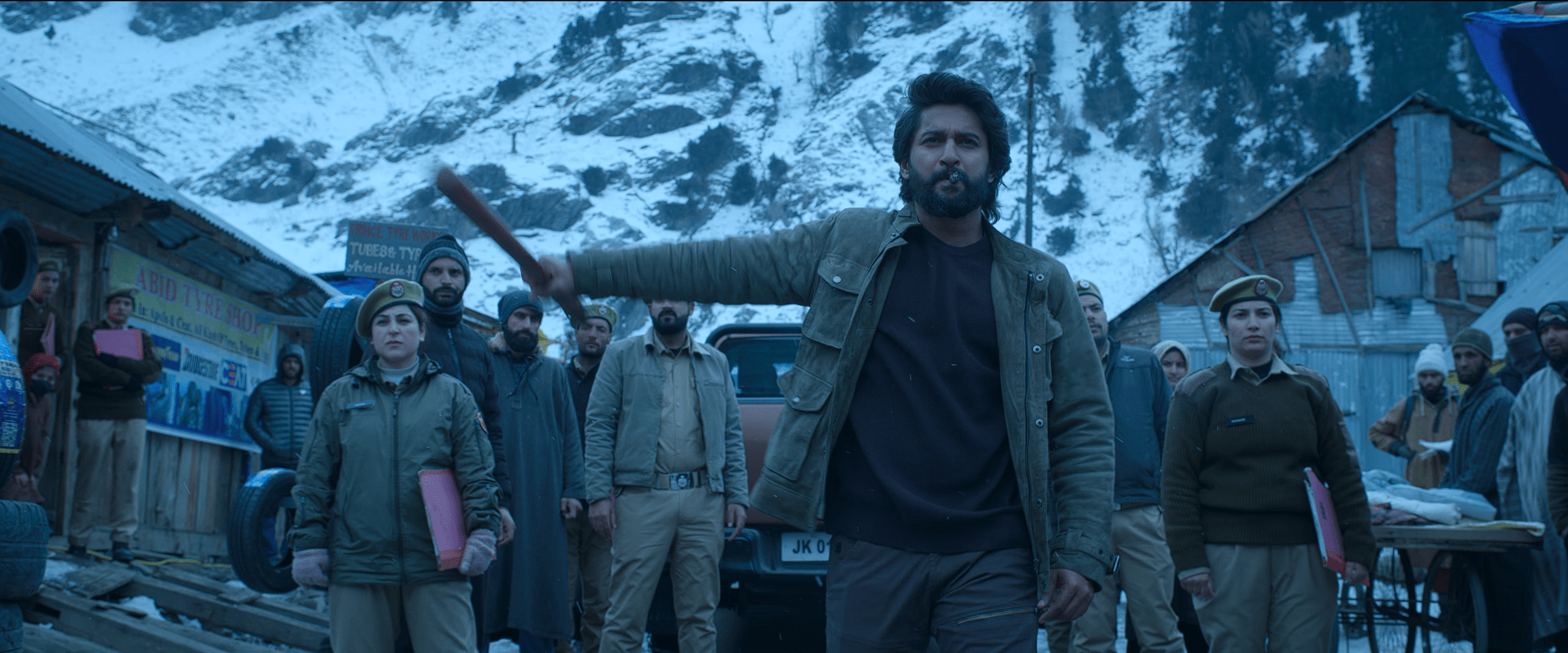
The Final 20–25 Minutes – Action That Completely Blows the Roof Off
Despite this complaint, the moment the film takes that big leap, the action goes insane – in a very good way. The last half hour alone justifies the ticket price. All the moderate bloodshed earlier doesn’t prepare you for what’s coming.
Remember the trailer shot of someone tearing a person into two pieces? That happens. A man’s legs get sliced apart. It’s all there. And this is where the 18+ rating becomes absolutely clear. They also include a single-shot sequence – not very long, maybe 30–40 seconds, maybe a minute at most. But it is thrilling to watch. And importantly, you can see the actor performing the action, not just stunt doubles. The clarity, the choreography, the brutality – better than half of today’s action films.
Some viewers may compare it to Marco, but having seen both, I think the comparison is unfair. Marco was so extreme that you wondered how the censor board even allowed it. HIT 3 is bloody, but not to the level where you question censorship. It is intense, impactful, shocking, goosebump-inducing, but still within a sensible cinematic boundary.
The HIT Universe Question – Do You Need to Watch Previous Parts?
Simple answer: No. You can watch this film directly without any confusion. You won’t miss 95–98% of the story. There are one or two cameos, and maybe a connection here and there, but they are so mild that even without context, you’ll get the point. They are not critical to understanding the main plot.
Strong Value, Strong Performances – But a Prolonged Ending

With all the praise I’m giving, recommending this film should be easy. The investigation feels engaging. Performances are strong. Couple of songs with better Hindi translation could have helped, but they don’t ruin anything. The action is a major highlight. And overall, I definitely got value for my money.
But some issues cannot be ignored. Even after the main conflict is resolved, the film simply refuses to end. Explanation after explanation, exposition after exposition – they keep adding more. At some point I was like, “Brother, it’s enough. What I wanted, I’ve got. Now finish it.” But no – they drag it for almost ten extra minutes. These ten minutes are used to close off part three, and even then, they add another small sequence. It’s not bad, but it feels unnecessary.
This becomes the film’s second biggest problem.
The first, as I mentioned, is that although the movie runs for 2.5 hours, inside it different “boxes” exist – the grounded investigation box, the romance box, the Endgame-scaled twist box, the hyper-violent action box. Each feels like a different movie. Not a deal-breaker, but noticeable.
Final Verdict
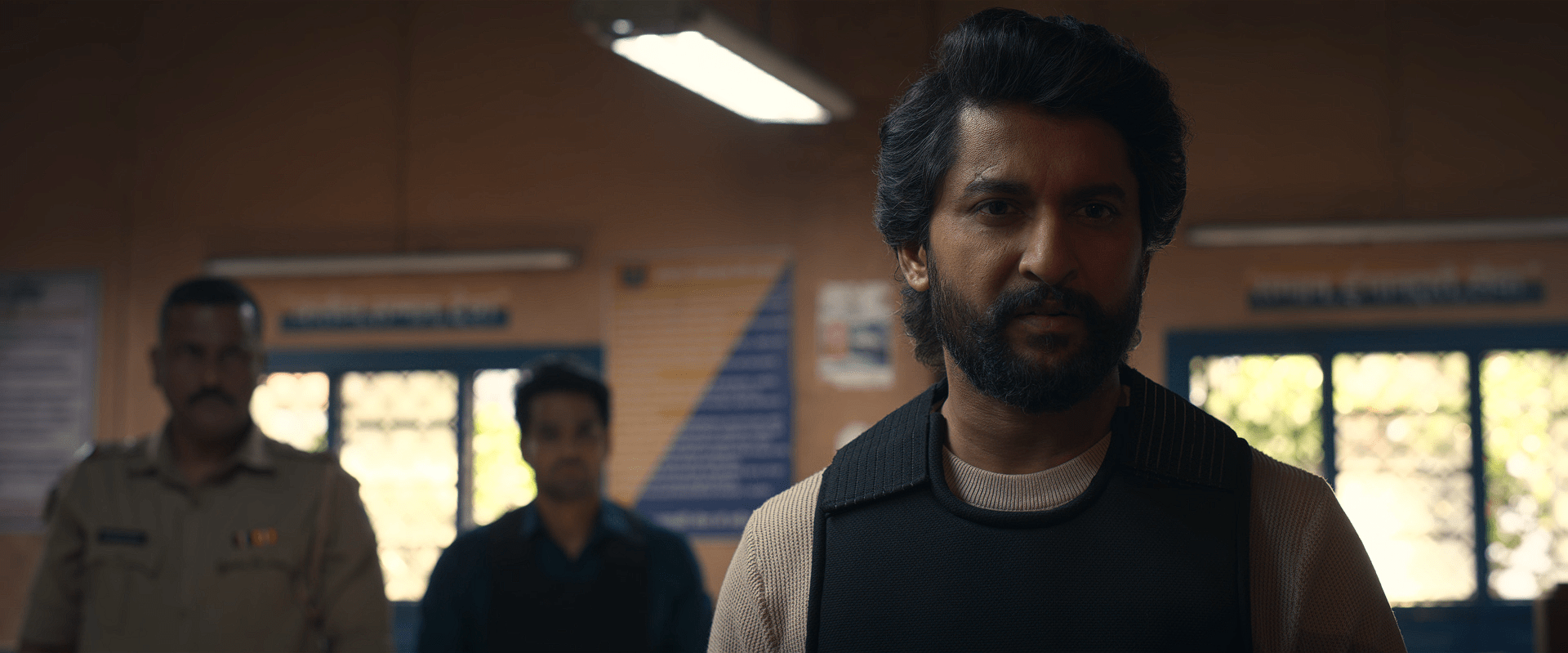
Despite the uneven structure and the extended ending, HIT: The Third Case delivers a gripping investigation, powerful performances, surprising scale, and genuinely exhilarating action. If the movie is running near you, I think you should definitely try it once. You will enjoy it.
Rating: 3.75 out of 5
A charged, ambitious thriller that stumbles occasionally but hits far more than it misses.
Trailer
